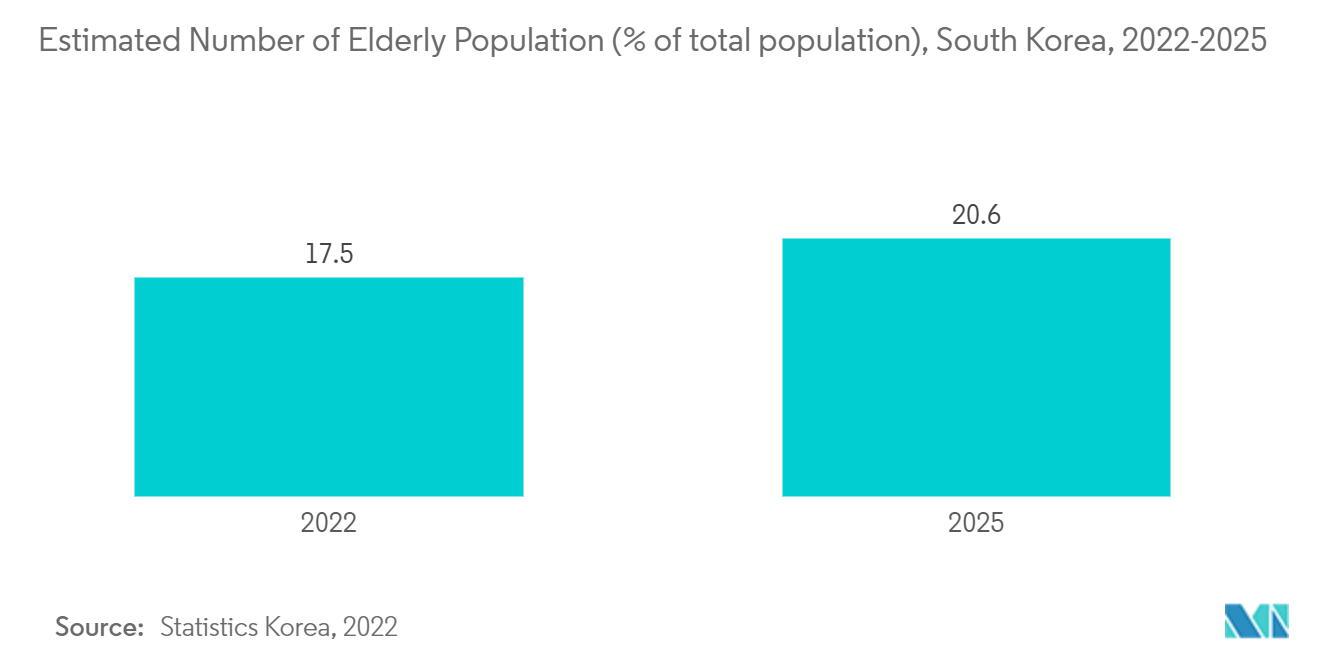Market Trends of South Korea Spinal Surgery Devices Industry
This section covers the major market trends shaping the South Korea Spinal Surgery Devices Market according to our research experts:
Discectomy under Spinal Decompression Segment Expected to Witness Growth
Discectomy is the medical term for the surgical removal of a herniated disc's damaged area in the spine. When a portion of the disc's softer interior material pushes through a tear in its harder outside, the result is a herniated disc. This may aggravate or pressure surrounding nerves, resulting in discomfort, numbness, or weakening. Thus, the segment is anticipated to witness growth owing to an increased incidence of herniated discs in South Korea.
The demand for discectomy is increasing in South Korea, creating opportunities for spine surgery devices. According to an article published in BMC journal in February 2022, bi-portal endoscopic discectomy has been frequently performed in current years in lumbar discectomy, with advantages over conventional surgery. That has shown acceptable clinical outcomes for herniated discs or lumbar disc herniation. Thus, technological advancements are one of the significant factors that contribute to the growth of the segment.
As per an article published in the Spine Journal in September 2022, when a group of researchers studied 64 patients with low back and leg pain with a single-level herniated lumbar disc and required discectomy, bi-portal endoscopic discectomy showed positive results and was suggested by the scientists to be a safe and effective surgical technique which has a slight advantage of reduced muscle damage. Hence, owing to such instances, the demand for discectomy among patients in South Korea is increasing. Consequently, segment growth is anticipated. Therefore, owing to the increased demand for discectomy, the segment of the studied market is expected to grow over the forecast period.

Thoracolumbar Segment Expected to Witness Significant Growth
The thoracolumbar spinal fusion devices provide conventional yet effective treatments to patients suffering from lumbar spinal stenosis and advanced alternative treatments for decompression spine surgery. The major market players manufacture anterior and posterior dynamic stabilization devices for the lumbar spine. Moreover, many clinical trials are in the process of further development. Thus, it will likely create demand for the thoracolumbar spinal fusion segment, fueling its growth.
The number of people affected by thoracolumbar injuries in the nation is an essential factor fueling the segment's growth. For instance, according to an article published in JKNS in December 2021, thoracolumbar fractures account for approximately 90% of all spinal column fractures, and nearly 10% to 20% of thoracolumbar fractures are burst fractures. In addition, as per the source above, when a group of patients with posttraumatic kyphosis (PTK) and burst fractures were observed in a healthcare setting in South Korea, all patients achieved solid fusion at the osteotomy site, in both groups, and 40% of each group of patients showed improved postoperative neurological status. Thus, such instances show that thoracolumbar fusion is a successful technique due to its high success rate. This creates demand for the devices used for thoracolumbar fusion procedures, thereby driving the segment's growth.
Thoracolumbar fractures are usually seen among the elderly and are the common osteoporotic fractures among elderly patients. According to the 2022 update by UNFPA, 17% of the total population in South Korea accounts for the elderly population. As South Korea has a high burden of the aging population, a more significant increase in thoracolumbar fusions is expected to be performed in the country. In addition, thoracolumbar fractures are treated with percutaneous fusion since they support the reduction of operative time and blood loss, as well as less soft tissue trauma. The considerable prevalence of thoracolumbar fractures in the nation increases the number of thoracolumbar spinal fusion surgeries performed. Therefore, owing to the increase in the majority of thoracolumbar spine injuries, segment growth is anticipated to grow over the analysis period.


